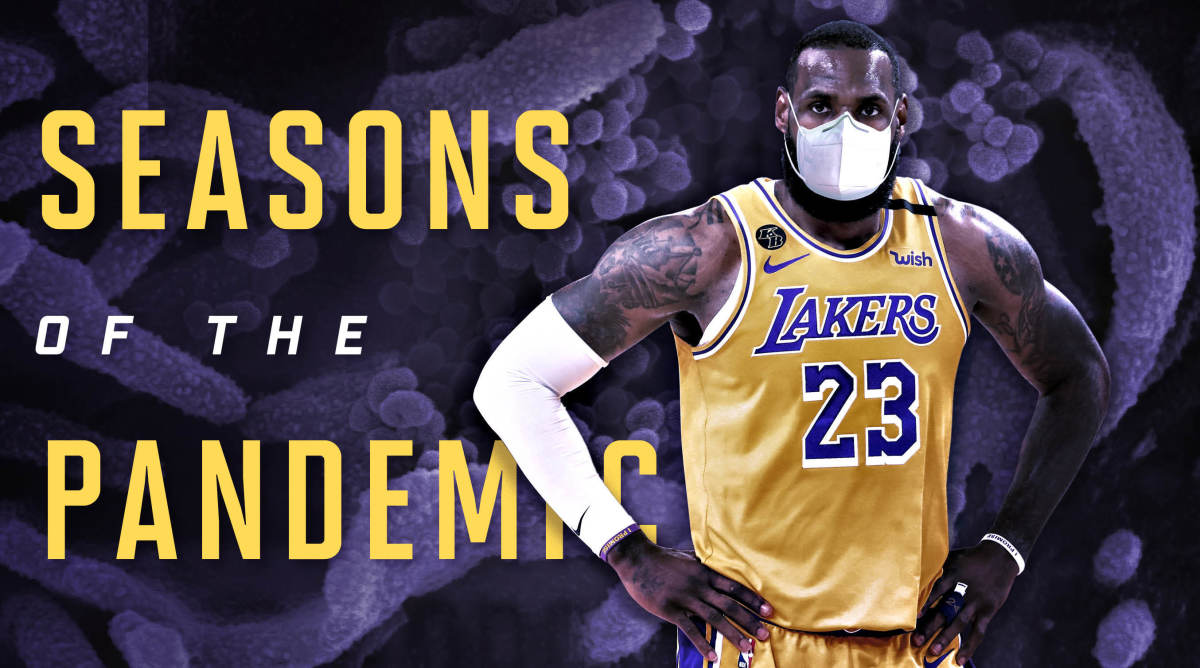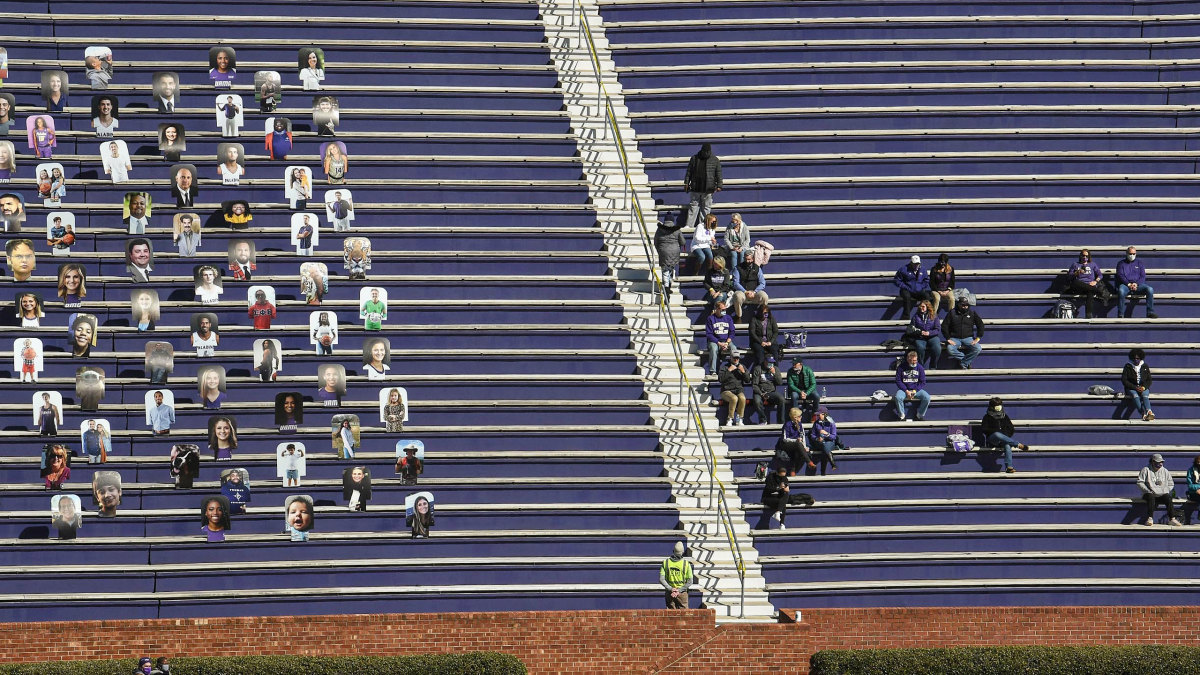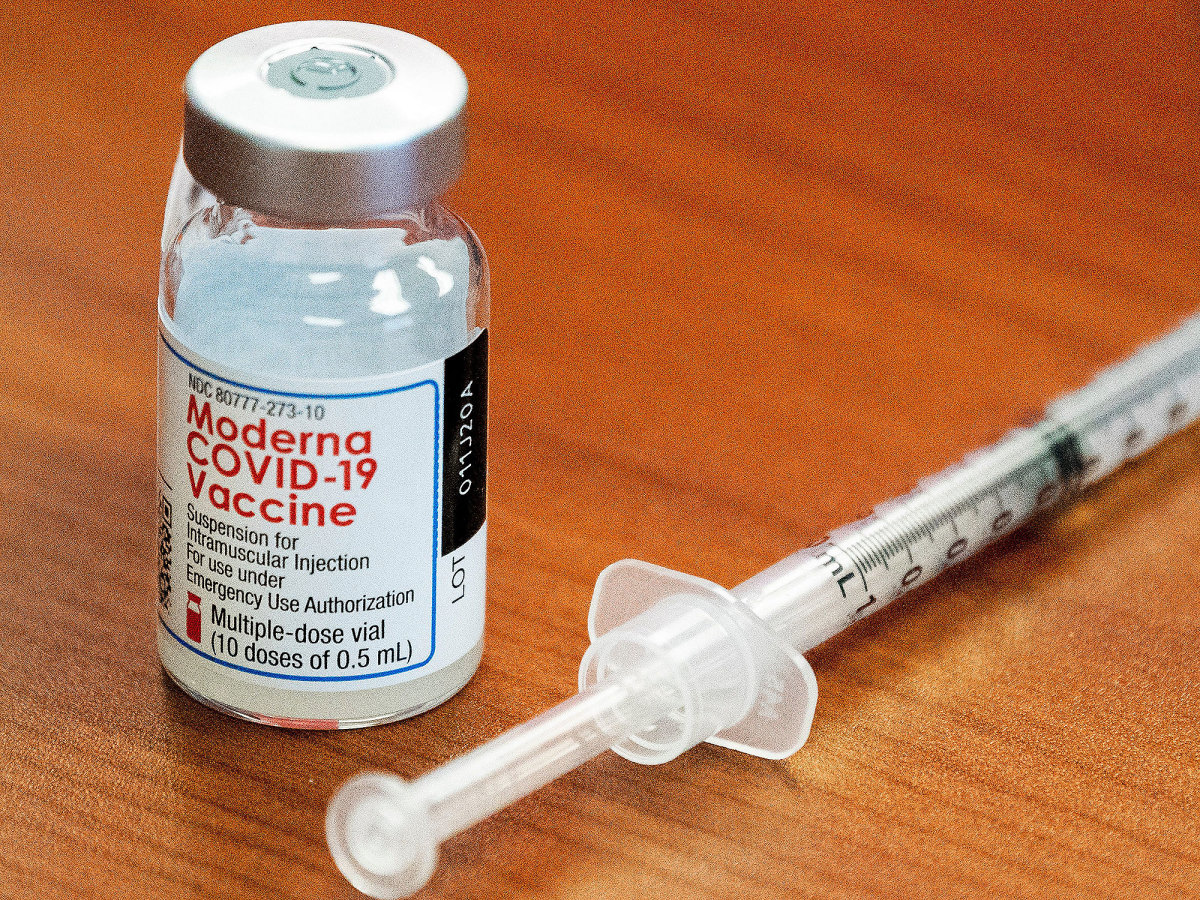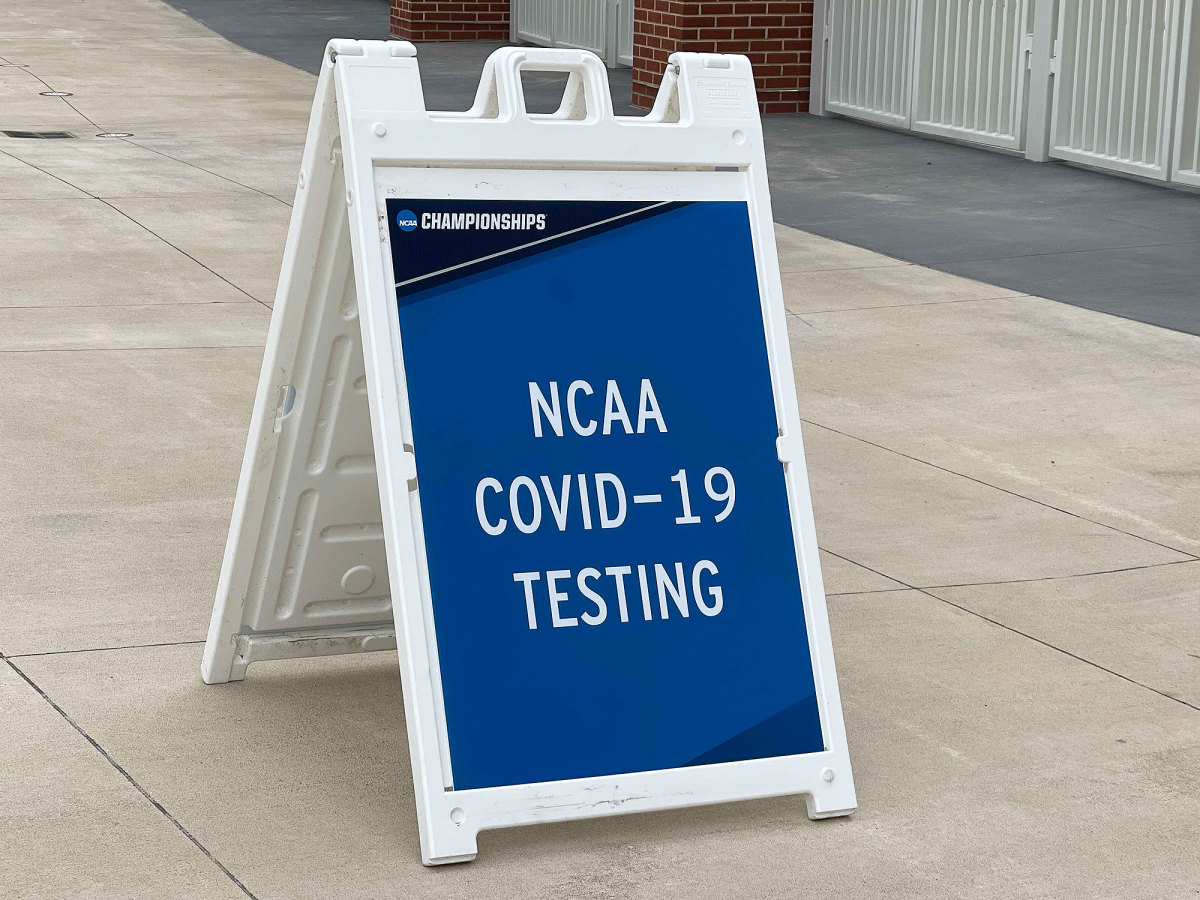How One Year of COVID-19 Has Forever Changed College Football
Chip Kelly isn’t one to give financial advice. He’s no Wall Street expert or big-league broker.
But when sports slowed to a crawl last March because of a mysterious virus, he ordered his UCLA staff to download the virtual communications application Zoom onto their computers. And then he offered to them, free of charge, advice that seems prophetic a year later.
If you got any cash, he told them, buy Zoom stock.
“I didn’t listen to my own advice!” says the Bruins coach, who chuckles while retelling the story this week.
Until that day last March, Kelly didn’t know much about Zoom. And neither did Neal Brown, the West Virginia coach who even goes a step further. “I didn’t know Zoom existed,” he says.
Today, coaches throughout college football have evolved into Zoom experts. The pandemic has forced coaching, an industry often slow to modernize, to adapt to technological advances that had gone unused for years.
They Zoom with recruits, Zoom with other coaches, Zoom with parents and Zoom with players. Heck, they even Zoom now with their own families. There’s no slowing this newfound communication method. In college sports, pandemic or not, Zooming isn’t going anywhere.
“Zoom has turned into phone calls,” Kelly says. “That’s here to stay.”

Read More Stories on the Year of the Shutdown
The virus has left an imprint on the world, the U.S. and, yes, college football, too. A year after COVID-19 stalled the sports world, those within the college athletics universe are looking to the future of an industry that is forever changed by the past year.
As the country slowly emerges from its COVID-19 cocoon, impacts of this past year will linger for years if not decades to come, they say. Changes, at first thought to be temporary, may become permanent.
Virtual communication, primarily through Zoom, is expected to bring wholesale changes to the recruiting calendar. Game-day sidelines, their perimeters expanded for social distancing and restricted to team-only personnel, might never return to their normal size. Organized team activity (OTA)-style practices, allowed in late July because of the loss of spring drills, could become a new, precamp addition to the activity calendar.
Teams will travel more by bus and will schedule more regionally, administrators say. Coaches are prepared to carry over pandemic-inspired adjustments to practice that they used last fall, such as cross-training positions and holding split practices to limit contact tracing.
What about masking, weekly COVID-19 testing and attendance? Those may all depend on an answer to one question: Have you been vaccinated?
“I don’t think many people believe we’ll get rid of COVID-19 completely, but I think we’ll be able to manage it and treat it like a more serious flu,” says Doug Ackerman, a longtime athletic physician and associate athletic director at Oregon State who chairs the Pac-12’s medical advisory board.
“However,” he adds, “that all depends on people being vaccinated.”
Sports medicine officials are coming to grips with an impending hurdle in a post-COVID-19 world: vaccinating enough staff, coaches and college athletes to create herd immunity, allowing them to eschew mask-wearing, social distancing and surveillance testing as well as fill their stadiums to the brim.

Many of them are hoping, some expecting, that this happens by June. Similar to COVID-19 tests last summer, the challenge with the vaccine is the availability and distribution of it, says Chris Klenck, head team physician at Tennessee. As of Wednesday, one in four American adults has received at least the first vaccination shot.
Vaccine protocols are governed by local health departments based on age, race, occupation and underlying health conditions. Athletes, normally young and healthy, are down the list.
That’s not necessarily the case, though, for those who normally swarm to college football games in the fall.
“I think vaccinations are going to play a critical role in answering the question if we can have full stadiums this fall,” Klenck says. “The possibility of having large capacity will become more likely. It’s just too early to tell.”
Before worrying about attendance, college leaders and doctors are concerned with vaccinating their teams. What if some staff members, coaches and players refuse to be vaccinated? That’s an ongoing discussion among NCAA leaders, says Tory Lindley, the president of the National Athletic Trainers’ Association.
“I'm not aware of anyone talking about making the vaccination mandatory [to compete],” he tells SI. “However, there are on-campus discussions about making the vaccine mandatory for travel.”
Conferences and schools are advocating that team members get in line for vaccination. In fact, the SEC is already holding Zoom meetings with players’ parents and creating educational PowerPoint presentations on vaccination, says Klenck. The league is hoping to debunk any myths surrounding the vaccine.
“We’re going to strongly encourage them to get vaccinated,” says American Athletic Conference commissioner Mike Aresco, “but we can’t force anybody to do it.”
Some believe that requiring vaccinations could result in legal trouble. For instance, while fans may be required to take a COVID-19 test upon entering a stadium, schools are unlikely to compel them to show vaccination proof, a potential infringement on privacy rights and personal liberties, says Jeffrey Dugas, Troy’s team doctor and a member of the NCAA Committee on Competitive Safeguards and Medical Aspects of Sports. In a way around this, Ackerman suggests that stadiums could create separate seating areas for those vaccinated and those not.
“The more vaccine adoption we get, the more likely we are able to manage COVID in an effective way,” Ackerman says. “There’s going to be some hesitancy with some staff and athletes—they’re not going to want to take it.”

While the vaccine discussions continue, impacts of the past year still linger throughout the college game, some of them woven into the fabric of the sport, like Zoom. NCAA leaders anticipate significant changes to the recruiting calendar, eliminating contact and evaluation periods while incorporating more dead periods.
Fewer coaches will be on the road. Instead, more athletes will visit campus. There is talk of eliminating, or at least partially eliminating, the May evaluation period, an annual time when assistants visit dozens of high schools to check in on recruits. Coaches are not allowed to speak with prospects during evaluation visits. They can only watch them practice, and speak to coaches and other high school administrators.
This time can often produce minor NCAA violations, often termed the “bump rule,” when coaches bump into prospects and hold what is an illegal conversation according to NCAA rules.
“Our coaches have begun to understand that Zoom and other correspondence with recruits can be done more effectively and efficiently through electronic methods,” says Clemson AD Dan Radakovich. “So many circumstances have happened over time—bumps during the spring—and they really don’t need to happen.”
There is a practical impact, says Big 12 commissioner Bob Bowlsby. Assistant coaches and coordinators can stay on campus to coach the players on their team rather than scouring the nation for players on potential future teams.
But the elimination of the evaluation period could come at a cost to parents of athletes, says Herm Edwards, Arizona State’s head coach.
“Can families afford to visit so many campuses?” he asks. “You’re opening another can of worms.”
Zoom goes beyond use as a recruiting tool. Todd Berry, the executive director of the American Football Coaches Association, believes many coaches will continue to use the application to conduct team, staff and position meetings. It can save time and costs, coaches say.
On the practice field, some coaches plan to continue using pandemic-inspired changes they made last fall. For instance, at West Virginia, Brown split his team in half, with one half practicing in the morning and the other later in the day. It was meant to avoid having too many players at once wrapped up in contact tracing.
The adjustment worked out so well, the Mountaineers will use it this coming fall, too.
“Guys got so many reps,” he says. “It was beneficial.”
Because most teams missed spring practice, the NCAA granted teams the right to hold a two-week OTA-style session as a ramp up to camp. Brown hopes the NCAA continues the OTAs, described by coaches as walk-throughs with a football. They better prepared his team for camp and made camp more efficient.
“I think some of the preseason camp model will stick with us,” says Berry.
And what about weekly or daily testing? Doctors expect testing to reduce significantly among teams. But much of it could be contingent on vaccinations and the prevalence of the virus in the area. For now, medical experts haven’t yet completely learned how vaccinated people transmit COVID-19, if at all. That’s a key question when it comes to both surveillance testing within teams and attendance, Dugas says.
By the end of the summer, he expects that the CDC will have enough data—it usually takes six months—to release details on such. Athletic administrators, meanwhile, are hoping that weekly testing will no longer be necessary.
“At what point do you treat it as a regular virus? When does that switch flip?” asks Texas A&M AD Ross Bjork.
Testing is a financial burden. Mid-American Conference schools, for example, have spent a combined $4 million on testing, says commissioner Jon Steinbrecher.
“It’s not sustainable for us,” he says.

Several administrators across the country are planning to have full stadiums. That goes for some of the biggest venues in the nation: Alabama, Texas A&M, Clemson, etc. Schools have started selling tickets with that plan in mind, administrators say, while knowing they may have to adjust if need be. Outside of TV revenue, ticket sales are normally the top revenue-producing endeavor for Power 5 schools.
“If you listen to some of the medical experts and we get to a circumstance of so many people are vaccinated …” says Radakovich, “we can get to something that is somewhat akin to normalcy. Will it ever be normal again? I don’t know. I don’t know that if we have a full stadium that people are not going to have to wear masks.”
Other high-ranking NCAA leaders question if fans will be comfortable enough to even fill a stadium.
“It wouldn’t be surprising if people were not immediately ready to sit cheek to cheek with people they don’t know, things we used to routinely do,” Bowlsby says. “It may take a while for society’s confidence to come back.”
Through it all, college sports turns a collective page with this week’s first COVID-19 anniversary. It’s on to Round 2, where, yes, there will be plenty of familiar items from this past year, including Zoom.
While some coaches enjoy Zoom, everyone has their limits. Being “Zoomed out” is a thing. Just ask 66-year-old Edwards, the ex-NFL head person in his third year coaching the Sun Devils.
“There’s a detriment to Zoom. With Zoom, people feel like they can have more meetings,” he says. “Everybody wants to have a meeting now because you can do it on Zoom. I’m like, Are you kidding me?”
